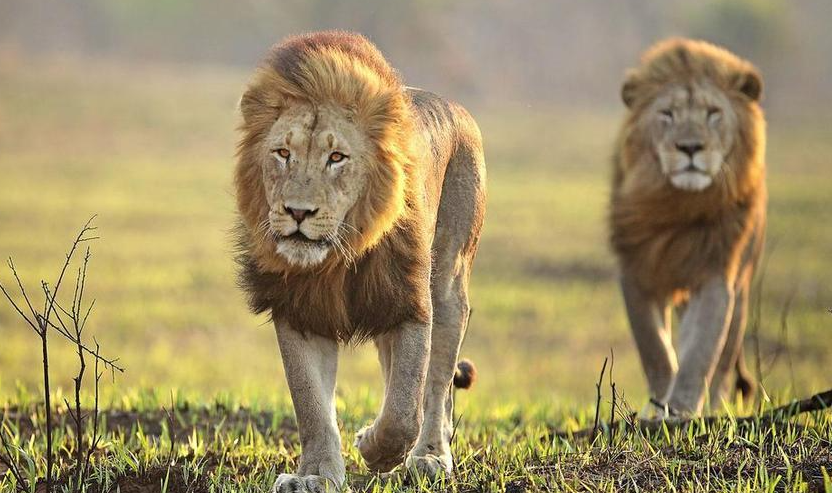
(The Mausoleum of King Kasubi)
The Royal Cemetery of the Kingdom of Uganda, where the last 4 Kings of the Kingdom are buried, is regarded as a sacred place by Ugandans and is located about 16 km west of Kampala.
On March 16, 2010, the Kasubi Royal Mausoleum, a World Heritage site located on the outskirts of Kampala, the capital of Uganda, caught fire, and the main buildings inside the mausoleum were basically destroyed by fire.
(Rwenzori Mountain National Park)
The Rwenzori Mountains National Park covers an area of 100,000 hectares in western Uganda. The park is made up of the backbone of the Ruvensori Mountains, including the third highest peak in Africa (Mount Margarita 5,109 m).
The glaciers, waterfalls and lakes of this region make it one of the most beautiful mountains in Africa. The park protects many natural habitats, endangered species and rare plants, including the giant heather.(Lake Kioga)
Kyoga Lake also known as Kioga Lake. Lakes of central Uganda. Formed by the Victorian Nile River, it is navigable between the ports of Namasagali and Masindi by ships with shallow draft. The lake is 1,033 meters above sea level.
(Bwindi National Park)
Bwindi National Park is located in the southwest of Uganda, at the intersection of plains and mountain forests. Covering an area of 32,000 hectares, Bwindi National Park is renowned for its biological diversity, with more than 160 species of trees and more than 100 species of ferns.
A great variety of birds and butterflies can be found here, as well as many endangered species, including mountain orangutans. It is one of 29 vegetated forest reserves in Africa and was inscribed on the World Heritage List in 1994.
(Lake Mburo National Park)
Lake Mburo National Park is a national park in the African country of Uganda, located in the southwest of the country, 30 kilometers east of Mbarala, about 240 kilometers from the capital Kampala, covers an area of 260 square kilometers, was established in 1982, wildlife has zebras, antelope, buffalo and more than 300 species of birds.
(Source of the Nile)
The Nile is 6,690 kilometers long and is the largest river in the world. South of Khartoum, Sudan's capital, there are two main rivers: the Blue Nile, which flows from Ethiopia to Sudan, and the White Nile, which flows from Uganda to Sudan.
The furthest of the Nile's sources is the Kagera, which originates in Burundi. The Kagera River flows through Rwanda and Tanzania to Lake Victoria. Lake Victoria's only outlet is the White Nile.
The British explorer Speke was the first European to enter Buganda (now the Buganda region of Uganda) in 1862. Upon investigation, he declared the outlet of Jinja on the north shore of Lake Victoria to be the source of the Nile.
Later, a monument was erected at the place where Speke declared the source of the Nile, and it became known as the source of the Nile. With lush greenery and beautiful scenery, it is one of Uganda's main tourist attractions. About 10 km down the source is Bujagali Falls.
Although the drop of the waterfall is not large, the river twists and turns, and the water is swift, forming a majestic cascade waterfall.
(Equatorial circle)
Equatorial Circle is located about 80 kilometers west of the capital Kampala, is the east-west highway through the main road, because it is located on the equatorial line and named, is one of the unique representative scenery.
The equatorial circle is a ring symbol building with a diameter of about 2.5 meters, which has a unique design and is separated from the north and south sides of the highway.
At the top of the Equator circle is the "equator" mark, below the line dividing the north and south, next to the arts and crafts shop. Tourists often come, stop to admire, take photos.

